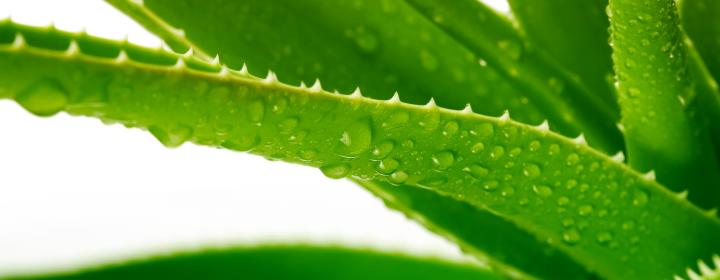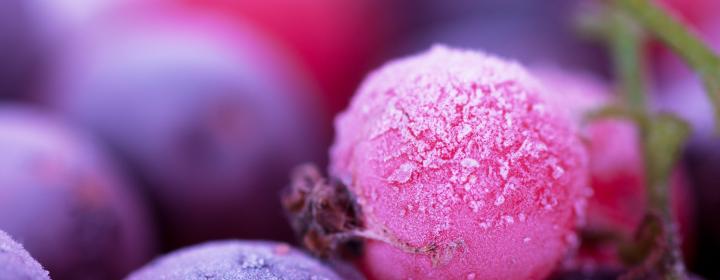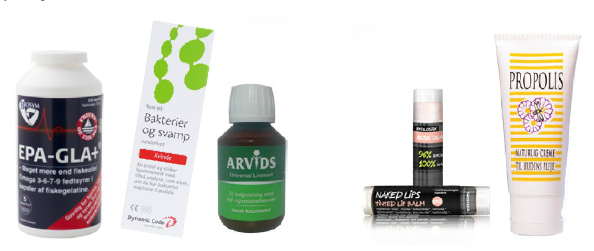Aloe–An Herbal Ally Revisited, Michael Thomsen, N.D.
Aloe vera (Aloe barbadensis Miller), a member of the Liliaceae family, has been used from ancient times as a medicinal plant, primarily as a topical treatment for wounds, burns and other skin conditions. Yet it is also known to have been used internally as a general tonic, anti-inflammatory agent, laxative, aphrodisiac, and anthelmintic. Thought to have originated in Africa, and mentioned as early as 2200 BC on a Sumerian clay tablet and later in the Egyptian Papyrus Ebers, aloe’s earliest detailed uses in Western medicine appear in the Greek herbal of Dioscorides. There the sap of the plant was described as being used externally to treat a multitude of skin disorders including boils, ulcers and itches, as well as internally for stomach disorders and infections. By 100 AD aloe was introduced into Chinese medicine, where in addition to being used for skin disorders, it was employed to treat sinus problems and fever and convulsions in children. Aloe is thought to have been introduced to North America in the 1700s, where it has since remained in wide use as a healing agent and component of commercial medicinal and cosmetic products. Since the beginning of the 20th century, there has been increasing scientific study of the potential benefits of this ancient herbal remedy.
The International Aloe Science Council
The International Aloe Science Council (IASC) was established to promote scientific investigations of aloe vera and set manufacturing standards for its use. The IASC is a nonprofit, worldwide trade organization, Its membership includes aloe growers, processors, finished goods manufacturers, marketing companies, insurance companies, equipment suppliers, sales organizations, physicians, scientists, and researchers. According to the IASC, more than 250 species of aloe are grown around the world, of which the two most popular are A. barbadensis Miller andA. arborescens. In the United States, most aloe is grown in the Rio Grande Valley of South Texas, Florida and Southern California. Internationally, Aloe is grown in Mexico, the Pacific Rim countries, India, South America, Central America, the Caribbean, Australia and Africa. The original commercial use of the aloe plant was for a resin called aloin, a yellow sap used for many years as a laxative, and which became synonymous with the name “aloe.” This later created much confusion later when aloe’s other main ingredient, aloe gel―a clear colorless semi-solid gel was stabilized and marketed. The gel, which had its commercial beginnings in the 1950s, is now enormously popular as a moisturizer and healing agent in cosmetics and OTC drugs, as well as an ingredient of nutritional beverages. Information about the IASC and its work is available at http://www.iasc.org/aloe.html
Active Constituents
The part of the aloe plant used both traditionally and commercially is the leaf, from which two products are extracted: aloe resin or latex, and aloe gel. The resin, which comes from the latex that oozes from the cut leaf of the plant, is yellow, with a bitter taste. The clear gel is produced by parenchymal cells in the central part of the leaf. The diluted gel is commonly known as “aloe vera extract” or simply “aloe juice.” The resin or latex of aloe contains anthraquinones, particularly aloin A and B, while aloe gel is 99% water. The three main components of the gel are glucose, malic acid, and the polysaccharide acemannan, which consists of a long chain of linked mannose molecules, each bearing an average of on acetate group. on one of the the three remaining positions in the ring. Aloe gel also contains lignans, saponins, salicylic acid, sterols, and triterpenoids; vitamins A, C, E, and B12; thiamine, niacin, and folic acid; and sodium, calcium, potassium, manganese, magnesium, copper, chromium, zinc, and iron (1,2). The fresh gel contains glutathione peroxidase, isozymes of superoxide dismutase, and the proteolytic enzyme carboxypeptidase (3,4). The polysaccharides of aloe can be isolated from the plant and analysed with nuclear magnetic resonance (NMR) spectroscopy (5). When this is done, the acetate groups on the mannose monomers of acemannan produce a unique NMR “fingerprint.” To ensure the stability of liquid aloe products, a preservative must be added to them, and should be named on the product label. If the gel is not probably stablized, certain decomposition products are produced. Both the preservatives and the decomposition products of improperly stabilized aloe gel are easily recognizable in the NMR spectrum. Thus NMR can be used in the quality assurance of aloe gel products.
Uses of Topical Aloe
When applied topically, aloe is useful in the treatment of skin wounds and ulcers, burns, radiation burns, frostbite, psoriasis, and genital herpes. Its healing properties may be attributed to antimicrobial, immune-stimulating, and anti-inflammatory activities, and an inhibiting effect on the formation of thromboxane. Allantoin has been shown to stimulate epithelialization, and acemannan has been found to stimulate macrophage production of interleukin-1 and tumor necrosis factor (TNF), which is associated with wound healing. (6) Cytokines such as Il-1 and TNF acts as growth factors stimulating the induction of fibroblast proliferation. Aloe affects a number of factors intrinsic to wound healing. It has, for example, been shown in vitro to inhibit thromboxane, a cytokine that inhibits wound healing (7), and it contains enzymes that have been found to break down damaged tissue, which can subsequently be removed by phagocytosis (8). by peripheral neutrophils. To test the effectiveness of topical application versus oral administration, a study was conducted using rats with full-thickness wounds, the results showing topical use of Aloe gel to be slightly more effective than internal use. The collagen content in granulation tissue was measured to be 89% in the topical group compared to 83% in the oral group (9). Studies have also found that aloe gel increases the collagen content of scar tissue, but also changes its collagen composition and increases its degree of collagen cross-linking, all of which increase the strength of such tissue (9,10). Additionally, several low-molecular-weight compounds present in aloe gel have been found to protect tissues from free-radical-mediated oxidative damage (11), and an acemannan gel has been shown to assist the healing of radiation burns in mice, especially when applied during the first week after injury (12).
Burns
A study involving 27 patients with partial-thickness burn injuries found that topical aloe gel significantly accelerated healing, to slightly less than 12 days, as compared to more than 18 days for controls treated with a Vaseline impregnated gauze dressing. The aloe treatment brought about full epithelialization after 14 days (13). A study involving 18 outpatients with moderate to deep second-degree burns over 2% to 12% of their total body surface area found a commercial aloe vera ointment to be as effective as silver sulfadiazine in terms of both healing time, at 13 days versus just over 16 days with the latter, and also in protecting against bacterial colonization (14).
Frostbite
In combination with other treatments, topical aloe significantly enhances healing in frostbite. In a clinical study in which it was combined with standard treatments such as rapid rewarming of affected areas, analgesics, antibiotics, and debridement, topical aloe vera cream produced healing in 67% of a group of 56 patients, as compared to 32.7% of a control group of 98 patients who received only the standard treatments. Moreover, only 7.1% of the patients in the combination-treatment group required amputation, as compared to 32.7% in the control group. Unfortunately, although its results seem encouraging, this study is difficult to interpret because of mismatching of the study groups and differences in the combination regimens (15). Aloe is also believed to act synergistically with pentoxifylline―a drug that enhances blood flow by reducing blood viscosity―to further increase tissue survival in frostbite. The frostbitten ears of rabbits were treated with pentoxifylline, aloe vera cream or a combination of the two. Tissue survival was calculated as the percent of total frostbite area that remained after 2 weeks. Tissue survival was notably improved with pentoxifylline (20%), better with aloe vera cream (24%), and the best with the combination therapy (30%)(16).
Other Topical Uses
Among the other benefits of aloe was the finding that a dressing of aloe gel in combination with a polyethylene oxide gel accelerated healing after dermabrasion as compared to polyethylene oxide gel alone. Following the procedure, the abraded face was divided in half. Treatment with the combination dressing led to 90% re-epithelialization at 5 or 6 days after treatment, as compared to 50% with the standard dressing. This is important because faster healing helps reduce the risk of bacterial infection, subsequent keloid formation and changes in pigmentation (17). A number of case reports describe positive effects of topically applied aloe gel for leg ulcers, including some that failed to respond to standard medical interventions (18). Besides these other uses, topically applied aloe is beneficial for psoriasis. In a 16-week double-blind, placebo-controlled study of 60 patients with mild to moderate chronic psoriasis, with a 12-month follow up, an 0.5% aloe vera extract in a hydrophilic cream produced a decrease in psoriatic plaques in 82.8%, versus only 7.7% in the placebo group (19).
Genital herpes
Two clinical studies had good results with 0.5% topical preparations of aloe in genital herpes. One of these, a double-blind, placebo-controlled study, demonstrated that 0.5% aloe gel extract in a hydrophilic cream, applied three times daily for 5 consecutive days, was more efficacious than placebo for initial episodes of genital herpes in 60 men aged 18 to 40 years. The treatment was well tolerated by all of the study subjects (20). The second study, involving 120 subjects, found that a preparation containing 0.5% whole aloe leaf extract in a hydrophilic castor and mineral oil cream base, applied three times daily for 5 days per week for 2 weeks, accelerated healing as compared with placebo. Again, no significant adverse reactions were reported (21).
Immunostimulant Effects
Although aloe gel is commonly used as a topical agent for wound healing, aloe is also used internally. An experiment done in 1980 demonstrated that aloe extract given to mice 2 days before exposure was protective against a variety of fungi and bacteria (22). Since then, aloe has been shown to be active against a wide variety of bacteriain vitro, including Pseudomonas aeruginosa, Klebsiella pneumoniae, Streptococcus pyogenes, Staphylococcus aureus, and Escherichia coli (1, 14). When acemannan was isolated from aloe, it was found to increase the response of lymphocytes to antigens in vitro (23), and was also found to stimulate the release of cytokines, inducing an immune attack on implanted sarcoma cells in mice that led to these cells’ necrosis and to tumor regression (24). In vitro studies suggest that aloe also has antiviral activity as a result of its interference with DNA synthesis (25). Other studies have shown the anthraquinones in aloe to be virucidal against herpes simplex 1 and 2, vaccinia virus, parainfluenza virus, and vesicular stomatitis virus (26). The acemannan component of aloe has exhibited activity against human immunodeficiency virus type 1, influenza virus, and measles virus (27, 28, 29), and has been used adjunctively with antiretroviral therapy in human HIV infection. In a preliminary clinical trial with the anti-HIV drug azidothymidine (AZT), acemannan in a dose of 800 mg daily significantly increased the numbers and activity of circulating monocytes (macrophages) in 14 HIV-infected patients (30). However, a subsequent, randomized double-blind, placebo-controlled study of 63 male subjects with advanced HIV infection, and taking zidovine and didanosine, found that acemannan at an oral daily dose of 1600 mg does not prevent the decline in CD4 count characteristic of progressive HIV disease. Acemannan showed no significant effect on p24 antigen and quantitative virology as compared with placebo (31). The usefulness of acemannan in the treatment of HIV remains to fully investigated.
Anti-Inflammatory Effects
By reducing oxidation of arachidonic acid, aloe gel reduces prostaglandin synthesis and inflammation. A study of rats with croton oil-induced edema reported a 47% reduction in swelling after the topical application of aloe gel (22). Animal studies also found that topical application of aloe gel produced an increase in numbers of fibroblasts (33). It has been suggested that C-glucosyl chromone (a bitter tasting resin) which has recently been isolated from aloe gel extracts, is responsible for the anti-inflammatory effect of aloe gel. The C-glucosyl chromone was shown to be similar in potency to hydrocortisone when tested in a mouse ear bioassay.(34).
Gastrointestinal Effects
Oral aloe vera is a popular treatment for a variety of gastrointestinal disorders. In normal human subjects it has been shown to enhance colonic bacterial activity, gastrointestinal pH, stool specific gravity, and gastrointestinal motility (35). The anthraquinones of aloe latex act as laxative stimulants, and animal studies. have shown that aloe latex increases intestinal water content, stimulates mucus secretion, and induces intestinal peristalsis (36). However, aloe is a more drastic and irritating laxative than other herbs (37) and its prolonged use may cause an electrolyte imbalance through depletion of potassium salts. Further study is needed to establish the optimal gastrointestinal indications for the use of aloe.
Asthma
Orally administered aloe has been found beneficial in asthma (38). In an open study, a whole-leaf extract of aloe, containing the anthraquinones discussed earlier, produced improvement in one third of a group of 33 patients with chronic asthma (39).
Diabetes
In a trial involving 72 patients with diabetes, aloe juice consisting of 80% aloe gel, at a dosage of 1 tablespoon taken twice daily, significantly reduced blood sugar levels as opposed to those in a control group in combination with glibenclamide was more effective in reducing blood sugar levels than glibenclamide alone in 72 patients with non-insulin-dependent diabetes (8).
Safety
Adverse reactions to aloe are rare, but hypersensitivities and contact dermatitis have been reported (40, 41). Hypersensitivity manifested by dermatitis, and possibly by contact urticaria, has been observed after prolonged topical use of aloe (41). Strong laxatives such as aloe latex are contraindicated in children, and should not be used in patients who have a known hypersensitivity to aloe, or in cases of nausea, vomiting or signs and symptoms of gastrointestinal obstruction. Consideration should also be given to possible potassium loss with aloe, which may affect cardiac electrophysiology. Strong laxatives such as aloe latex are contraindicated in pregnancy.
References
1. Shelton RM. Aloe vera. Its chemical and therapeutic properties. Int J Dermatol; 30(10):679-683. 1991
2.Yamaguchi I, Mega N, Sanada H. Components of the gel of Aloe vera (L.) burm. f. Biosci Biotechnol Biochem; 57(8):1350-1352. 1993
3. Klein AD, Penneys NS. Aloe vera. Journal of the American Academy of Dermatology; 18(4 I):714-720. 1988
4. Sabeh F, Wright T, Norton SJ. Purification and characterization of a glutathione peroxidase from the Aloe vera plant. Enzyme Protein; 47(2):92-98. 1993
5. Diehl B, Teichmu
ller E. Aloe vera, quality inspection and indentification. Agro Food Industry Hi-Tech January/February 1998 Sighted online: http://www.iasc.org/nmr.html 6.2.2005
6. Liptak JM. An overview of the topical management of wounds. Aust Vet J; 75(6):408-413. 1997
7. Zachary LS, Smith Jr DJ, Heggers JP. The role of thromboxane in experimental inadvertent intra-arterial drug injections. Journal of Hand Surgery; 12(2):240-245. 1987
8. Bunyapraphatsara N, Yongchaiyudha A, Chokechaijaroenporn O. Antidiabetic activity of Aloe vera juice, II: clinical trial in diabetes mellitus patients in combination with glibenclamide.Phytomedicine;(3):245-248. 1996
9. Chithra P, Sajithlal GB, Chandrakasan G. Influence of Aloe vera on collagen characteristics in healing dermal wounds in rats. Molecular & Cellular Biochemistry; 181(1-2):71-76. 1998
10. Heggers JP, Kucukcelebi A, Listengarten D et al. Beneficial effect of Aloe on wound healing in an excisional wound model. J Altern Complement Med; 2(2):271-277. 1996
11. ‘t Hart LA, Nibbering PH, Van Den Barselaar MT et al. Effects of low molecular constituents from Aloe vera gel on oxidative metabolism and cytotoxic and bactericidal activities of human neutrophils.International Journal of Immunopharmacology; 12(4):427-434. 1990
12. Roberts DB, Travis EL. Acemannan-containing wound dressing gel reduces radiation-induced skin reactions in C3H mice. International Journal of Radiation Oncology, Biology, Physics; 32(4):1047-1052. 1995
13. Visuthikosol V, Chowchuen B, Sukwanarat Y et al. Effect of aloe vera gel to healing of burn wound a clinical and histologic study.J Med Assoc Thai; 78(8):403-409. 1995
14. Heck E, Head M, Nowak D. Aloe vera (gel) cream as a topical treatment for outpatient burns. Burns; 7(4):291-294. 1981
15. Heggers JP, Robson MC, Manavalen K, et al. Experimental and clinical observations on frostbite. Ann Emerg Med; 16(9):1056-1062. 1987
16. Miller MB, Koltai PJ. Treatment of experimental frostbite with pentoxifylline and aloe vera cream. Archives of Otolaryngology – Head & Neck Surgery; 121(6):678-680. 1995
17. Fulton JE, Jr. The stimulation of postdermabrasion wound healing with stabilized aloe vera gel-polyethylene oxide dressing. J Dermatol Surg Oncol; 16(5):460-467. 1990
18. Zawahry ME, Hegazy MR, Helal M. Use of aloe in treating leg ulcers and dermatoses. Int J Dermatol; 12(1):68-73. 1973
19. Syed TA, Ashfaq AS, Holt AH, et al. Management of psoriasis with Aloe vera extract in a hydrophilic cream: A placebo-controlled, double-blind study.Tropical Medicine & International Health; 1(4):505-509. 1996
20. Syed TA, Afzal M, Ashfaq AS, et al. Management of genital herpes in men with 0.5% Aloe vera extract in a hydrophilic cream: A placebo-controlled double-blind study.Journal of Dermatological Treatment; 8(2):99-102. 1997
21. Syed TA, Cheema KM, Ahmad SA et al.Aloe vera extract 0.5% in hydrophilic cream versus Aloe vera gel for the management of genital herpes in males. A placebo-controlled, double-blind, comparative study [3].Journal of the European Academy of Dermatology and Venereology; 7(3):294-295. 1996
22. Brossat JY, Ledeaut JY, Ralamboranto L, A et al. [Immunostimulating properties of an extract isolated from Aloe vahombe. 2. Protection in mice by fraction F1 against infections by Listeria monocytogenes, Yersinia pestis, Candida albicans and Plasmodium berghei].Arch Inst Pasteur Madagascar; 48(1):11-34. 1981
23. Womble D, Helderman JH. Enhancement of allo-responsiveness of human lymphocytes by acemannan (Carrisyn(TM)). International Journal of Immunopharmacology; 10(8):967-974. 1988
24. Peng SY, Norman J, Curtin G, et al. Decreased mortality of Norman murine sarcoma in mice treated with the immunomodulator, Acemannan. Mol Biother; 3(2):79-87. 1991
25. Saoo K, Miki H, Ohmori M, et al. Antiviral activity of aloe extracts against cytomegalovirus. Phytotherapy Research; 10(4):348-350. 1996
26. Anderson D. Wound dressings unravelled. In Practice; 25(2):70-83. 2003
27. Sydiskis RJ, Owen DG, Lohr JL, et al. Inactivation of enveloped viruses by anthraquinones extracted from plants. Antimicrob Agents Chemother; 35(12):2463-2466. 1991
28. Kahlon JB, Kemp MC, Carpenter RH, et al. Inhibition of AIDS virus replication by acemannan in vitro. Mol Biother; 3(3):127-135. 1991
29. Kahlon JB, Kemp MC, Yawei N, et al. In vitro evaluation of the synergistic antiviral effects of acemannan in combination with azidothymidine and acyclovir.Mol Biother; 3(4):214-223. 1991
30. McDaniel HR, Carpenter RH, Kemp M, et al. Extended survival and prognostic criteria for acemannan (ACE-M) treated HIV-1 patients.Antiviral Res Suppl;(1):117. 1990
31. Montaner JS, Gill J, Singer J, et al. Double-blind placebo-controlled pilot trial of acemannan in advanced human immunodeficiency virus disease.J Acquir Immune Defic Syndr Hum Retrovirol; 12(2):153-157. 1996
32. Davis RH, Rosenthal KY, Cesario LR, et al. Processed Aloe vera administered topically inhibits inflammation. J Am Podiatr Med Assoc; 79(8):395-397. 1989
33. Davis RH, Stewart GJ, Bregman PJ. Aloe vera and the inflamed synovial pouch model. J Am Podiatr Med Assoc; 82(3):140-148. 1992
34. Hutter JA, Salman M, Stavinoha WB, et al. Antiinflammatory C-glucosyl chromone from Aloe barbadensis. J Nat Prod; 59(5):541-543. 1996
35. Bland J. Aloe vera juice: an important role in gastrointestinal disorders? Altern Med;(1):280. 1986
36. Ishii Y, Tanizawa H, Takino Y. Studies of aloe. V. Mechanism of cathartic effect. (4). Biol Pharm Bull; 17(5):651-653. 1994
37. Reynolds T, Dweck AC. Aloe vera leaf gel: A review update. Journal of Ethnopharmacology; 68(1-3):3-37. 1999
38. Shida T, Yagi A, Nishimura H, et al. Effect of Aloe extract on peripheral phagocytosis in adult bronchial asthma. Planta Med;(3):273-275. 1985
39. Afzal M, Hassan RAH, et al. Identification of some prostanoids in Aloe vera extracts. Planta Med;(57):38-40. 1991
40. Nakamura T, Kotajima S. Contact dermatitis from aloe arborescens. Contact Dermatitis; 11(1):51. 1984






Wow, awesome blog structure! How lengthy have you ever been blogging for?
you made blogging glance easy. The whole glance of your website is
excellent, let alone the content! You can see similar here
dobry sklep
Thanks for finally writing about > Aloe vera – engelsk artikel – Dobry sklep
This is a great tip especially to those
new to the blogosphere. Brief but very precise info… Many thanks for
sharing this one. A must read post! I saw similar here: Sklep online
I read this piece of writing fully on the topic of the resemblance
of most up-to-date and preceding technologies, it’s amazing
article. I saw similar here: Sklep
Hey there! Do you know if they make any plugins
to assist with Search Engine Optimization? I’m trying to get my blog to rank for some targeted keywords but I’m not seeing very good success.
If you know of any please share. Cheers! You can read
similar art here: Sklep internetowy
It’s very interesting! If you need help, look here: ARA Agency
mexican drugstore online: Mexican Pharmacy Online – reputable mexican pharmacies online